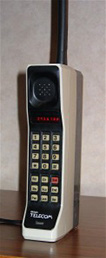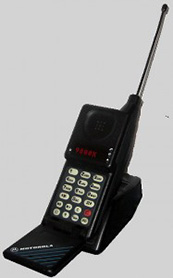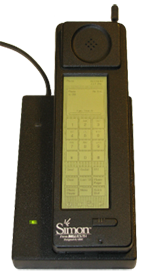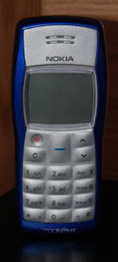Living in a world full of convenience created by modern technological
advancements, it’s hard to imagine a life without the existence of mobile
phones. Man has become somewhat unappreciative of such modern technology,
forgetting that it was only 40 years ago that mobile phones weighed a kilo, was
almost the size of your head, had only 30 minutes of air time, and took 10
hours to charge the battery. It’s safe to say a lot has changed since the
invention of Martin Cooper’s first mobile phone.
1 G: The First Generation
Yes, there was a 1G network, and it was analog! The Advanced Mobile Phone
System (AMPS) was introduced to North Americans in 1978, bringing mobile phone
technology to the masses. In 1983, Motorola released the world’s first
commercial mobile phone.

The first commercial handheld mobile phone:
Motorola’s DynaTAC 8000X
Digital World
The subsequent network became digital. The 1990’s saw a huge rise in mobile
phone use, with the European development of the GSM standard and the North
American CDMA standard. 2G was probably when we all had our first experiences
with a mobile phone.

This was the era when the first smartphone was launched by BellSouth
Cellular in 1994. The IBM Simon had mobile phone and PDA capabilities and
weighed half a kilo. Aside from the usual calling features, this phone could
send faxes, emails, and cellular pages.

The Data Age
The cell phone as we know it now uses data. The 3G network allowed data
transmission, revolutionising the functionality of the mobile phone. Media
streaming of radio and TV content became available and browsing the internet
became faster with the advanced 3G+ network.
Despite the emergence of advanced mobile phone features, the Nokia 1100
gained massive popularity on a global scale, becoming the world’s best-selling
phone handset and the world’s best-selling consumer electronics device.
Although now discontinued, more than 250 million handsets have been sold since
its release in 2003.

Nokia 1100, the world’s best-selling mobile
phone
The mobile phones and smartphones we are using today use 4G, an all IP
network. Compared to its previous generation, 4G provides an even faster
browsing experience with mobile ultra-broadband Internet access. With an
increasing number of smartphones with GPS and NFC capabilities, applications
for the mobile phone have also increased dramatically.
The mobile phone. It wakes us up in the morning. It gives us the weather
forecast. Tells us when to catch the metro. How to get to places. Where to eat.
Becomes a flashlight in darkness and keeps us connected to friends and family.
Without it we are lost, so thank you, Mr. Cooper, for inventing the mobile
phone 40 years ago.
 This was the era when the first smartphone was launched by BellSouth
Cellular in 1994. The IBM Simon had mobile phone and PDA capabilities and
weighed half a kilo. Aside from the usual calling features, this phone could
send faxes, emails, and cellular pages.
This was the era when the first smartphone was launched by BellSouth
Cellular in 1994. The IBM Simon had mobile phone and PDA capabilities and
weighed half a kilo. Aside from the usual calling features, this phone could
send faxes, emails, and cellular pages.
 The Data Age
The cell phone as we know it now uses data. The 3G network allowed data
transmission, revolutionising the functionality of the mobile phone. Media
streaming of radio and TV content became available and browsing the internet
became faster with the advanced 3G+ network.
Despite the emergence of advanced mobile phone features, the Nokia 1100
gained massive popularity on a global scale, becoming the world’s best-selling
phone handset and the world’s best-selling consumer electronics device.
Although now discontinued, more than 250 million handsets have been sold since
its release in 2003.
Today’s Network
The mobile phones and smartphones we are using today use 4G, an all IP
network. Compared to its previous generation, 4G provides an even faster
browsing experience with mobile ultra-broadband Internet access. With an
increasing number of smartphones with GPS and NFC capabilities, applications
for the mobile phone have also increased dramatically.
The mobile phone. It wakes us up in the morning. It gives us the weather
forecast. Tells us when to catch the metro. How to get to places. Where to eat.
Becomes a flashlight in darkness and keeps us connected to friends and family.
Without it we are lost, so thank you, Mr. Cooper, for inventing the mobile
phone 40 years ago.
The Data Age
The cell phone as we know it now uses data. The 3G network allowed data
transmission, revolutionising the functionality of the mobile phone. Media
streaming of radio and TV content became available and browsing the internet
became faster with the advanced 3G+ network.
Despite the emergence of advanced mobile phone features, the Nokia 1100
gained massive popularity on a global scale, becoming the world’s best-selling
phone handset and the world’s best-selling consumer electronics device.
Although now discontinued, more than 250 million handsets have been sold since
its release in 2003.
Today’s Network
The mobile phones and smartphones we are using today use 4G, an all IP
network. Compared to its previous generation, 4G provides an even faster
browsing experience with mobile ultra-broadband Internet access. With an
increasing number of smartphones with GPS and NFC capabilities, applications
for the mobile phone have also increased dramatically.
The mobile phone. It wakes us up in the morning. It gives us the weather
forecast. Tells us when to catch the metro. How to get to places. Where to eat.
Becomes a flashlight in darkness and keeps us connected to friends and family.
Without it we are lost, so thank you, Mr. Cooper, for inventing the mobile
phone 40 years ago. 

